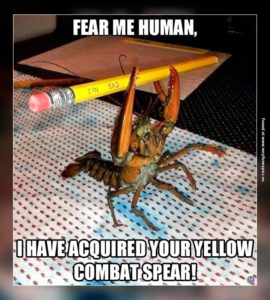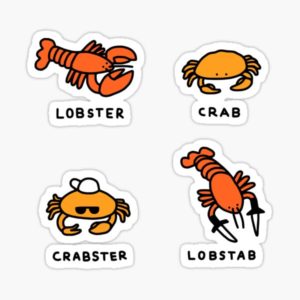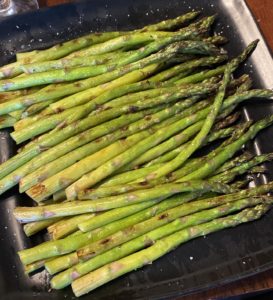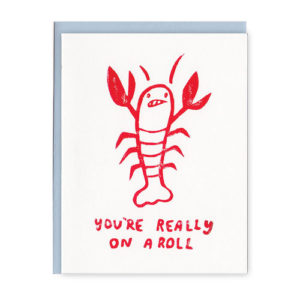-Sir Patrick Stewart
FUCKING HERO
Now that we are allowed to see other humans a good friend of ours wanted to get together and cook lobsters. Having never cooked such a large and venerable crustacean, Eric and I immediately accepted his challenge, errr invitation.
Knowing nearly nothing about lobsters Eric and I did a little research and found ourselves, as we often do, pages deep on Serious Eats reading Kenji Lopez-Alt’s article(s) all about lobsters.
Here’s what we learned. The first and foremost thing you need to know about lobsters is that they are zombies. Here’s why:
#1 Lobsters are immortal.
“Most species of animals and plants have a pre-determined lifetime; As their cells repeatedly divide, eventually they suffer DNA damage and shortened telomeres (the buffer zone at the end of a chromosome that prevents damage to the important bits). Eventually cells can’t reproduce, and the animal or plant dies. This doesn’t happen to lobsters; Their cells are able to divide and reproduce indefinitely, meaning that were it not for outside influences like disease, predators, or their innate tastiness, a lobster could conceivably live and grow forever.” -Kenji Lopez-Alt
American lobsters—or Maine lobsters, as they are commonly known—can weigh more than 40 pounds and grow up to 3 feet long. The largest lobster on record was caught off Novia Scotia in 1988. It weighed in at 44 pounds and was 42 inches long. Scientists believe it was at least 100 YEARS OLD.
To add to all of this, a lobster’s central nervous system is located in its throat, its nervous system in its abdomen, its teeth in its stomach and its kidneys in its head. Lobsters also hear using their legs and taste with their feet… I can’t really think of anything more supernatural than that.
#2 Lobsters are cannibals.
“A lobster needs to be alive, or at the very least just-killed when you cook it, full stop… but lobster and other similar shellfish face a different problem: enzymatic breakdown. See, lobsters and shrimp digest their prey via enzymes in their upper digestive tract located in their heads. Once killed, the lobsters turn into crustacean zombies, their digestive enzymes eating at their own bodies.” -Kenji Lopez-Alt
So a dead, or nearly dead lobster will begin to eat itself, and if you cook that lobster, will result in gross, mushy meat. WTF?!?
And while you’ll often see lobsters in the store with rubber bands on their claws those rubber bands are not just there for our human handler safety.
The rubber bands are also there to protect the lobsters from each other. See, if left unrestrained, the lobsters will devour their tank mates. No one is safe.
#3 Once dispatched, lobsters continue to lobster.
I know I know… when it comes to lobsters there’s much contention around which dispatch method is most humane. Some folks put the lobsters in the freezer for about an hour before they hit the pot.
Other braver souls just bite the bullet and split the head of the live lobster in two with a very sharp knife a la Walking Dead. But that doesn’t mean the lobster stops lobstering…
“That a lobster will continue to crawl around and, well, act like a lobster even after its head has been removed is a good indication of the primitiveness of its nervous system. Like a cockroach’s, its body can still move even without a central brain to control it.” -Kenji Lopez-Alt
If it makes you feel any better, because lobsters have neither a brain (in the technical sense) nor vocal cords that whole thing about them screaming in the pot is a myth. (The sound is actually air escaping from inside the exoskeleton as the temperature changes.)
Turns out, once you get passed the whole murder part, cooking a lobster is surprisingly easy. All you need is a large stock pot. Fill that pot with about an inch to an inch and a half of water, boil, and toss in your lobsters (head first if using the freezer method). Small lobsters will take about 15-20 minutes and then voila! They are ready.
If you want to get fancy Kenji recommends steaming the lobsters in segments (claws, tail, body) for about two minutes then transferring to a 350 degree oven until the meat reaches 135 degrees (approximately 7 minutes for claws, 15 minutes for tails).
Lobster is an impossibly lean source of protein and is chock full of vitamins and minerals such as B-12, Zinc, Magnesium, and Phosphorus.
The sides that are commonly suggested for lobster can get a little heavy and calorie dense: dredged butter, corn, potato, corn bread, etc. You get the idea.
In the Bergmann house we try and pair our crustaceans with lower calorie sides that also pack a flavorful punch. You can try out a cherry tomato salad with basil and red onions dressed in olive oil, balsamic, salt and pepper:
We hope you have enjoyed this foray into zombie lobster territory. Remember, don’t be a selfish shellfish…
if you’ve got a great lobster recipe send it our way and it might get featured in one of our upcoming Food Fridays!










